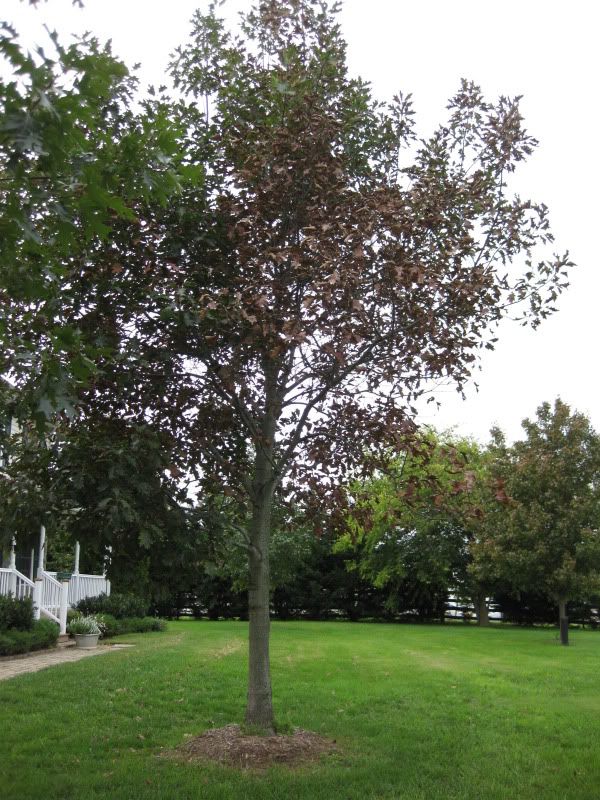coolbrze
ArboristSite Operative
What are the symptoms of Oak Wilt? I've done some research on it, but am looking for the experts opinions. What's the best way to deal w/ and cure it?



Symptoms in Red Oak
The main period of infection is in the spring when the new timber ship is being formed. Symptoms in the red oak occur as early as May. The leaves turn dull green or bronze, are filled with water, shrivel, and then turn yellow or brown. Damage occurs from the tip and the outer edges towards the midrib and base. Wilting leaves are rolled into the central nerve and the line between the bronze and green tissue of individual leaves is very different, these symptoms appear quickly over the crown, often within a couple of weeks, and leaves at the ends of the branches fall
The disease progresses rapidly, and some trees die within 1 or 2 months after onset of symptoms. Most trees die within a year. Growth spurts often branch from the trunk and larger during the year or the year following defoliation.
Symptoms in White Oak
Symptoms of the disease are much more variable in the white oaks, although symptoms are often the foliage of the same. In a few, especially oaks strawberries, the symptoms are essentially the same as red oaks, and the tree can die in one growing season. In general, however, white oaks die slowly. Only one or two branches may show symptoms and die within a year. If the fungus persists, some branches die in a season, and for several years, the tree may eventually die Cline. Some white oaks seem to recover from the disease but can carry the pathogen and serve as reservoirs asymptomatic.
White oak, unlike the red, often have discolored the patient infected annual rings. Mats fungus rarely appear in the white oaks.
Natural root grafts and insect vectors spread the oak wilt fungus from diseased to healthy trees. Healthy oaks growing next to the infected are infected through their roots. Root grafts (Fig. 5) offers a way to transmit the fungus and are an important factor in the spread, especially in areas with deep, gritty, dense, pure red oak.
The fungus overwinters as mycelium in still living, infested trees and mushrooms as platforms of dead trees. The fungus can spread over a mile at least two groups of insects: the sap and bark beetle feeding.
Control :
Unfortunately, there is no known way to save a tree infected with oak wilt fungus. The only way to keep trees healthy is through prevention. Early detection and prompt removal of root grafts dead or dying trees, and the split between sick and healthy trees are essential.
Mechanical and chemical barriers between patients and healthy trees can stop the spread of oak wilt fungus through root grafts. A plow trencher or vibration can be used for cutting or breaking the roots of the trees to a depth of 2 to 4 feet (0.6 to 1.2 m). Soil fumigants can also be used to kill the connection between the roots of trees.
Detailed procedures for the construction of mechanical and chemical barriers are given in the brochure refers to French oak wilt and Stienstra. Punctuality is important. The earlier root grafts between diseased and healthy trees are destroyed, the better the chances of saving the trees nearby.
To suppress the spread of the fungus on the ground, the control should be the goal of destroying the source of inoculum - the diseased tree - at the right time. All trees that die in a given year should be observed carefully for fungi and colonization of oak bark mats beetle April 1 next year. If the carpet or beetles are present, the whole tree should be burned, chipped, or covered with plastic for 60 days. In the eastern United States, about 50 percent of diseased trees contain beetles and about 25 percent produce carpets, however, these figures may vary depending on geographic location. Fresh pruning wounds may attract insects contaminated with the oak wilt fungus. Because of this, avoid unnecessary pruning and pruning in the winter, whenever possible. Trees should not be pruned during April, May or June or whenever the beetles are active







Trees should not be pruned during April, May or June or whenever the beetles are active
Enter your email address to join: